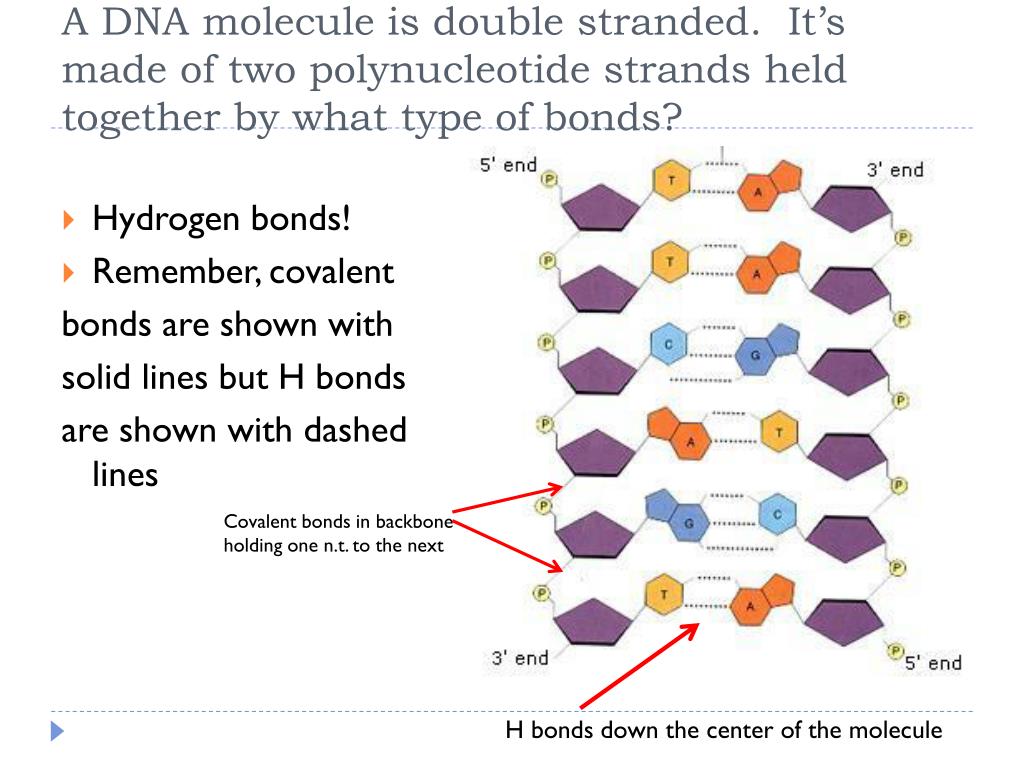

This discovery is what led to the base pairing Likewise, the concentration of cytosine will be equal to the concentration of guanine.

A chemist named Erwin Chargaffĭiscovered in the 1940s that, in a sample of DNA from any species, the concentration of adenine bases will be equal to The base pairing rules we have described are often called “Chargaff’s rules” after the scientist who developed them. This is what makes DNA well adapted to its function of storing hereditary information. DNA is also an especially stable molecule. These traits of DNA are what enable it to carry large amounts of information and to be copied quickly and precisely. The hydrogen bonds between the two nucleotide strands are relatively easy to break, and the nucleotide bases will only bond with a complementary match. Therefore, using these base pairing rules, we can determine that the sequence of DNA on the complementary strand should be TAATAACGCG. So, the type of bond that forms between complementary base pairs in DNA is the hydrogen bond. Hold the two strands together and allow them to twist into a double helix. With guanine-these are the “complementary base pairs.” The nitrogenous bases which are able to bond together form hydrogen bonds that In DNA, the nitrogenous base adenine bonds with thymine, and cytosine bonds Structure we call a “sugar–phosphate backbone.” The two complementary strands are held together by chemical bonds between the nitrogenous bases,Īnd only certain pairs of bases are able to bond with each other. Nucleotide monomers join toįorm nucleic acid polymers through condensation reactions that form phosphodiester bonds between the phosphate groups and pentose sugars. The strands are formed by the polymerization of nucleotides. Strands that twist into a distinct shape called a double helix. One molecule of DNA is made of two complementary What type of bond forms between complementary base pairs in DNA? AnswerĭNA is the genetic material of humans and is incredibly important in determining our characteristics.

A diagram of the double helix structure is shown in Figure 5.Įxample 2: Recalling the Type of Bond That Forms between Complementary Base Pairs in DNA The sugar–phosphate backbones make up the sides of the ladder, and two hydrogen-bonded bases Of the nucleotides, DNA forms a twisted ladder shape called a double helix. The bases are held together with hydrogen bonds. This means that the data stored in DNA has to be stable, accurate, and easy to copy.ĭNA is made of two strands of nucleotides bonded together at their nitrogen-containing bases. That may not seem like very much, but the data in DNA is what makes you who you are. In fact, one chromosome can carry almostĢ50 MB of data. The genetic information is in the sequence, or order, of the different nitrogen-containing bases.ĭNA is specifically adapted to storing information and to passing information on to offspring cells or organisms. Since the sugar–phosphate backbone of a nucleic acid is always the same, Nucleic acids are responsible for storing and transferring genetic information. The condensation reaction causes a water molecule to be released. According to base pairing rules (A with T and C with G), hydrogen bonds bind the nitrogenous bases of the two separate polynucleotide strands to make double-stranded DNA.Figure 4: A diagram showing the formation of a phosphodiester bond. The nucleotides are joined to one another in a chain by covalent bonds between the sugar of one nucleotide and the phosphate of the next, resulting in an alternating sugar- phosphate backbone. Each nucleotide is composed of a nitrogen-containing nucleobase-either guanine (G), adenine (A), thymine (T), or cytosine (C)-as well as a monosaccharide sugar called deoxyribose and a phosphate group. The two DNA strands are known as polynucleotides since they are composed of simpler units called nucleotides. Most DNA molecules consist of two biopolymer strands coiled around each other to form a double helix. DNA is a nucleic acid alongside proteins and carbohydrates, nucleic acids compose the three major macromolecules essential for all known forms of life. Deoxyribonucleic acid is a molecule that encodes the genome used in the development and functioning of all known living organisms and many viruses.


 0 kommentar(er)
0 kommentar(er)
